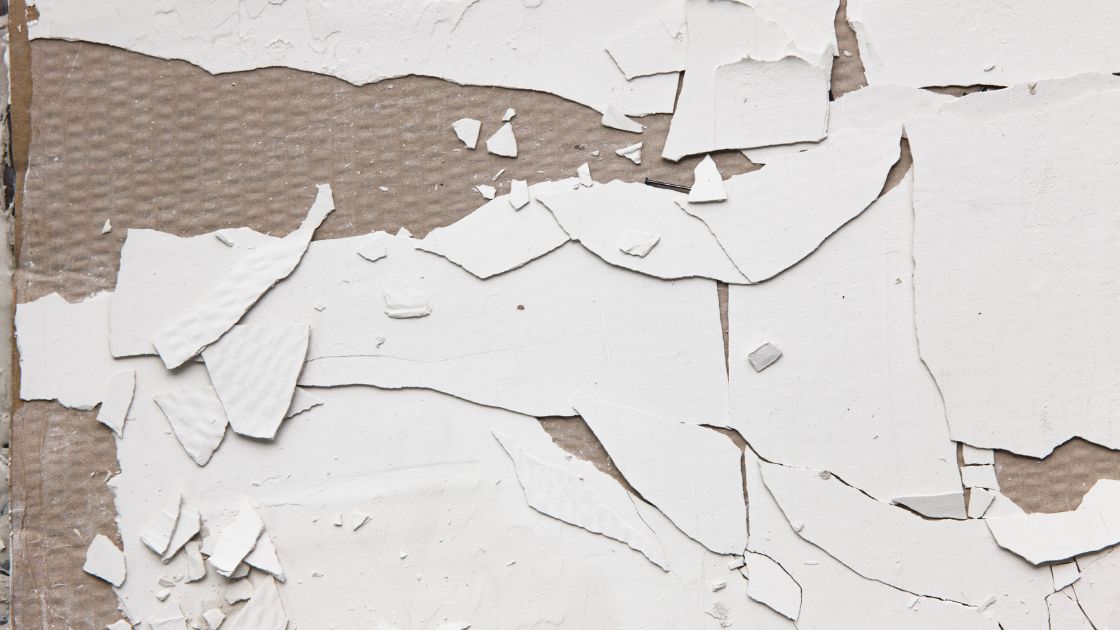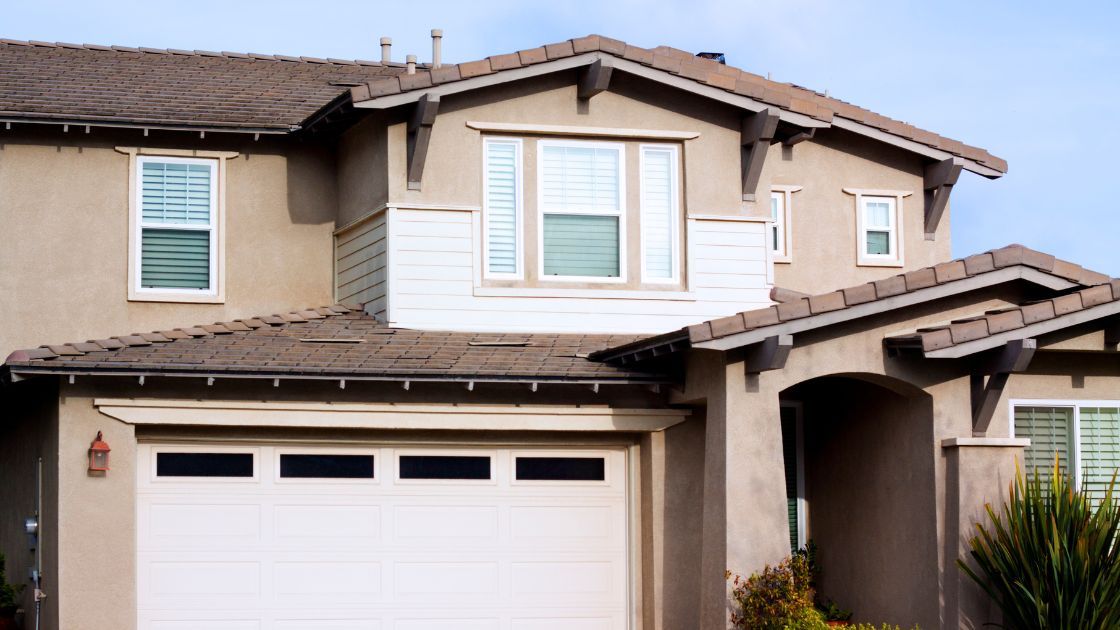|
Durability is an important feature when selecting the correct siding for your home. Stucco and brick are two common alternatives that are both strong and long-lasting. But which material is more powerful? Let's compare stucco and brick's features, benefits, and drawbacks. 1. Design and AppearanceStucco: Customizable and VersatileYou can create anything you want using stucco. You may paint it any color you want, and you can even shape it and give it a texture to make beautiful patterns and designs. As a result, you can give your house a unique style and modify it whenever you choose. Brick: Classic StyleBrick's timeless appeal offers your house a sophisticated and reliable feel. The nicest aspect is that it never needs painting, and its value endures. It is renowned for its enduring beauty despite having fewer color options than stucco (often red tones). 2. CostsStucco: Affordability with Some Trade-offsWhen it comes to pricing, stucco is less expensive than brick. Stucco materials typically cost $1000 to $2000 per 1000-square-foot wall, not including labor costs. Although stucco installation takes an average of 3-5 days and requires additional costs for painting, the overall cost is lower than that of brick. Brick: Higher Costs for Long-Term ValueBrick, while more expensive initially, provides long-term value and durability. It costs between $8 and $10 per square foot, including the cost of mortar installation. Because each brick must be set individually, brick installation takes longer. Despite its higher initial cost, well-built brick siding can survive for generations, making it an excellent investment. 3. MaintenanceStucco: Cracks and RepaintingBoth stucco and brick necessitate some level of upkeep. Cracks in stucco can form over time, especially in seismic zones or locations where shifting occurs. Repainting is also required every ten years to maintain the appearance as the paint fades over time. However, as compared to other siding materials, stucco is often low-maintenance. Brick: Regular Cleaning and LongevityBecause brick is more prone to moisture absorption, it requires regular cleaning to avoid the formation of mildew and moss. However, brick outperforms other materials in terms of durability. Properly built and maintained brick siding can last millennia, withstanding adverse weather conditions and retaining structural integrity. 4. Safety and ProtectionStucco: Good Insulation, Susceptible to Fire Click To Add TextStucco is a good insulator for dwellings, allowing heat to be retained in colder times. However, it is more prone to fire outbreaks than brick. Because of the composition of stucco, it is less heat resistant and potentially vulnerable in such scenarios. Brick: Excellent Insulation and Fire Resistance Click To Add TextBrick provides great insulation, keeping homes cool in warmer weather and warm in colder regions. It is also more fire resistant, as it can confine and prevent fire outbreaks. Because brick can endure high temperatures, it is a better choice for fire prevention. Final ThoughtsVarious considerations must be considered in the stucco versus brick strength discussion. Both materials are durable and strong, but there are certain trade-offs. Stucco has a predicted lifespan of approximately 50 years, although brick can endure considerably longer, even for millennia. The final decision between stucco and brick is determined by considerations like budget, aesthetic preferences, climate, and desired level of maintenance.
You can choose the siding option that best satisfies your requirements while boosting the beauty and longevity of your home by carefully balancing these factors.
0 Comments
Do you understand the significance of stucco repair? Have your stucco walls ever shown signs of deterioration or staining? If so, this might indicate stucco water intrusion, which, if left unattended, can cause severe damage. Read on to learn more. What Happens if You Don’t Repair Stucco?Let's examine these risks further and review the warning indications that the stucco needs to be repaired. Structural DamageStucco is a crucial component of the building's structure and aids in supporting and stabilizing the walls. It can be unsafe for your property's structural integrity to be compromised if the stucco is damaged or degrading. Water IntrusionStucco water intrusion is yet another critical problem associated with putting off stucco repair. Stucco can eventually absorb water since it is not entirely waterproof. Damaged stucco may allow water to seep into the walls, which may result in significant damage over time. Mold growth, wood rot, and other problems brought on by water intrusion can be expensive and time-consuming to fix. Decreased Curb AppealDue to its appealing look, stucco is a common building material. Stucco restoration that is neglected can result in a loss of curb appeal, which can significantly lower the value of your house. Damaged or falling apart stucco can be ugly and give the appearance that your property is not well-kept. Expensive RepairsSkipping stucco maintenance might lead to more costly repairs in the future. Stucco deterioration that goes unattended can develop into more severe problems that can be expensive and time-consuming. You may save money and prevent future, more expensive repairs by taking care of stucco repair concerns as soon as they arise. Signs You Need Stucco RepairAfter discussing the dangers of putting off stucco repair, let's talk about the telltale signals that it's time to do it. Here are some typical warning indicators that you need to be aware of: Cracks or HolesStucco that has cracks or holes in it may be damaged or deteriorating. These problems may result in water intrusion, which may result in serious harm over time. DiscolorationIf the stucco on your home is stained or discolored, there may have been water damage or mold growth. Additionally, exposure to the weather or the sun's UV rays can discolor something. Mold or MildewGrowing mold or mildew on or around your stucco indicates that water penetrates the substance. This problem may seriously harm both your health and your property. StainsNumerous things, such as water damage, corrosion, or mold development, can stain your stucco. These problems can detract from the beauty of your home and lower its value. Stucco Repair TipsAct quickly if you notice stains or color changes on your stucco walls. Below are some pointers for restoring stucco:
The Benefits of Stucco RepairNumerous advantages of stucco repair include:
Insurance Policies and Stucco RepairDid you know that insurance policies frequently call for prompt mitigation in cases of stucco repair water damage? Insurance companies demand that homeowners take action to stop more damage to resolve water damage quickly. Steps to Take When Filing an Insurance ClaimHere are some actions to follow if you need to file an insurance claim for water damage and stucco repair:
ConclusionIt's essential to repair any damage to your stucco as soon as possible to preserve the beauty of your property and prevent you from having to do expensive repairs. Delaying repairs might result in more severe issues like structural difficulties, water damage, and decreased curb appeal. Employing a trustworthy repair company to examine your stucco and offer suggestions is an excellent option. Ensure the stucco repair firm you choose has a good track record and industry experience. Maintaining the value and security of your house while keeping it in top condition is possible by taking care of your stucco. Don't put off fixing any faults with your stucco until it is too late. Speak with a reliable stucco repair business right away. FAQsHow often should I have my stucco inspected?To spot any problems early on, having your stucco inspected every few years is a good idea. However, you should contact a reputable stucco repair business right soon to schedule an inspection if you see any signs of stucco damage, such as cracks, holes, or discoloration. Can I fix the stucco damage myself?Repairing stucco damage on your own without prior experience is not recommended. Specialist knowledge and equipment are required for stucco repair to be done effectively and to prevent future damage. It's best to leave stucco repair to the professionals. Can stucco be painted?Stucco can indeed be painted. Choosing the right paint and application method is crucial to ensure the paint adheres well and doesn't harm the stucco. For painting tips on stucco, speaking with a seasoned painter or stucco restoration firm is advisable.
Your home's stucco exterior is like its face; it attracts attention first and establishes the style for the rest of your property. But your stucco needs routine maintenance to maintain its best appearance, just like your own skin. If your stucco is neglected, it may develop ugly cracks, grow mold, or even experience water damage. Fortunately, with the appropriate advice, you can maintain the top condition of your stucco façade for many years. Read on to learn more. How to Maintain Your Stucco ExteriorHere are eight essential hints for preserving stucco to attract neighbors and safeguard your home. Clean Your Stucco RegularlyYour stucco may become covered in filth, dust, and grime over time, giving it a drab, unpleasant appearance. Therefore, you should know how to clean stucco walls outside. Regular cleaning may prevent this buildup and keep your stucco looking fresh and clean. After removing any loose dirt with a power washer or garden hose, clean the surface with a soft-bristled brush and a light detergent solution. Avoid using abrasive tools or harsh chemicals since they can damage the stucco. Repair Any Cracks or DamageOver time, moisture can cause severe damage to your stucco by penetrating via cracks and other types of damage. Look for any signs of cracking or chipping in your stucco, and remedy any issues immediately. Use a stucco patching compound and pay close attention to the manufacturer's instructions for a quality repair. Check Your Stucco for Signs of DamageAlong with cracks, you should watch for other signs of stucco deterioration, like mold growth, discoloration, and bulging. A professional should examine these immediately because they can indicate a bigger problem with your stucco. Seal Your Stucco RegularlyYour stucco can be shielded from water damage and other sorts of wear and tear by sealing it. To preserve your stucco in good shape, apply a high-quality stucco sealer every few years or as the manufacturer instructs. Remove Bushes and Trees From Around Your StuccoTrees and bushes too close to your stucco might scratch or rub on the surface, resulting in damage. Maintaining your landscape will help you stop this kind of harm. Monitor Moisture Levels Around Your StuccoBecause it can promote mold formation and other damage, too much moisture can be a severe issue for stucco. Watch the moisture around your stucco, especially after heavy rain or snow. Make sure your gutters are clear and working correctly, and think about setting up a drainage system to keep water away from the foundation of your house. Protect Your Stucco from Harsh Weather ConditionsExtreme weather events, including torrential rain, strong winds, and chilly temperatures, can damage stucco. Take precautions to safeguard your stucco under severe conditions, such as increasing insulation to the exterior of your home or installing storm shutters. Keep Water Directed Away from Your Stucco WallsYour stucco exterior wall may sustain significant damage over time if water collects around them. To avoid water from collecting around your stucco, ensure your downspouts and gutters are pointed away from your home's foundation. You should also consider building a drainage system. ConclusionYour stucco façade doesn't have to be hard to maintain. By implementing these eight recommendations, you can keep your stucco looking its best while avoiding future costly repairs. Your stucco façade needs to be regularly cleaned, repaired, and sealed, monitored for moisture levels, and protected from harmful weather to maintain its durability and visual appeal.
See a skilled stucco contractor if you have any questions about how to maintain your stucco or if there might be damage that needs to be fixed. |
AuthorStucco Portland Oregon ArchivesCategories |
Serving Portland Metro & Surrounding Areas |
STUCCO PORTLAND OREGON
1325 SE 174th Pl Portland, OR 97233 BUSINESS HOURS
|






